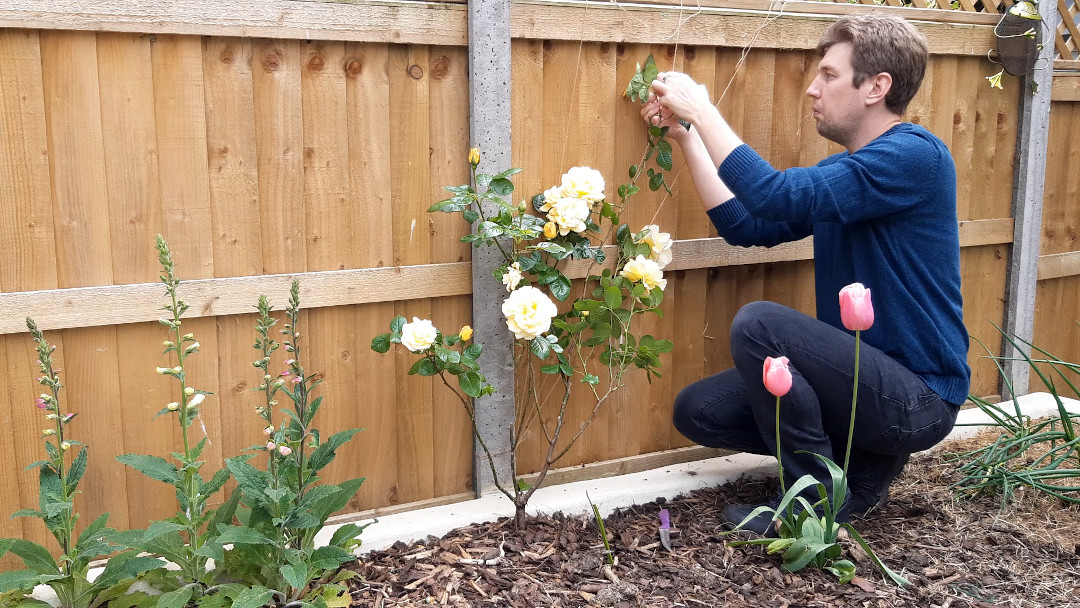Training climbing roses
Wrangling a climbing rose into a fan shape
We planted a climbing rose last year and, now that it’s had the past 2 seasons to root itself in, this spring we decided to train it up our new fencing.
Why train roses?
Climbing roses don’t have any way of “grabbing” or climbing naturally. Therefore, they need to be trained.
Training is simply providing a plant with a structure in which to climb up, and pruning it in such a way that it encourages growth which compliments the desired shape.
Or in other words, if you want the rose to look like a fan, build a fan and prune in a fan shape. Stop saying fan, ok.
Our rose was growing well but the wind was starting to throw it about. Roses really don’t like strong winds when not supported. Extreme weather can shake roses in the soil and even kill the plant.

The shape
The rose will be surrounded by some large delphiniums and hollyhocks so we wanted it to elevated above those, rather than grow horizontally along the fence where the flowers would be hidden.
Therefore, a close fan shape makes sense, encouraging the rose up towards the trellis.
Creating the fan shape
The first step was to loop some twine around our fence post. This would act as an anchor for our vertical lengths.

Our rose already had 6 main shoots, so we decided on 3 verticals on either side of the post.
Cutting 6 lengths of twine, we tied each to the bottom loop, and then equally spaced on the trellis at the top of the fence.

Cutting short lengths of twine, we tied the 6 shoots to their respective vertical support. Some were longer/maturer than others so needed a couple of ties along the length to secure properly.

I’m really happy with the results and, now that the hard work is done, it’s now a case of continuing to tie the shoots to the supports as they grow.
I get lots of my pruning and training information from “Pruning and Training - A creative step-by-step guide” by Peter Blackburne-Maze and Neil Sutherland. If you manage to find a copy of this book, or any by the same author(s), I would recommend getting one.

If you have any advice or tips, please comment below so we can all learn and grow together.
Article written on May 14, 2020
Updated May 14, 2020